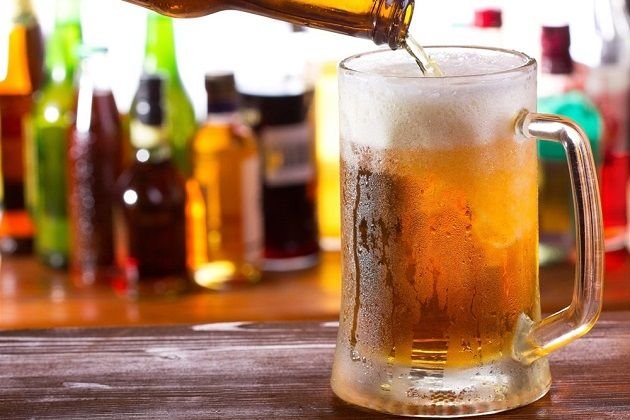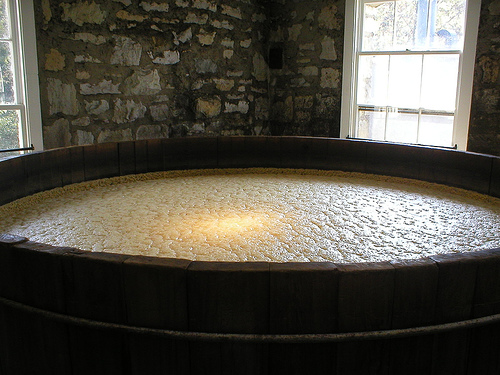The term #ale, of Scandinavian origin, via English, generically refers to high-fermentation beers, one of the three main beer families with lambics (spontaneous fermentation) and lagers (low fermentation)
Ale
High fermentation requires the addition of yeasts in optimum activity at high temperatures (15-24 ° C, ideally 18-21 ° C). Sometimes even up to 26-28 ° C for Beers and Session. The "high" yeast commonly used is Saccharomyces cerevisiae. The fermentation takes place for 3 to 8 days at a temperature of 15 to 25 degrees Celsius
It was the most common brewing method before the refrigerator was invented, but the high temperature does not protect the beer from bacteria or interlop mushrooms. In particular, the beer thus produced is kept for a shorter period than that of the low fermentation.
The high fermentation makes it possible to obtain high levels of alcohol (the high yeast is not "slowed down" in the presence of alcohol) as well as complex aromas. The beers thus produced are generally less loaded with carbon dioxide than the low fermentation beers. They are consumed at higher temperatures than the latter, generally between 6 and 12 degrees Celsius.
The lambic,
certainly the oldest type of beer is very unrelated, these are generally acidulated beers, made of a bend of young lambic (6 to 8 months) and more advanced fermentation (2 to 3 years). The yeasts spontaneous or commonly called wild yeasts come from the bacteria contained in ambient air and bacteria from the fruits that were added to the beer. Yeast Brettanomyces bruxellensis and Brettanomyces lambicus are use. #Lambic the appellation is highly regulated and restricted to Belgian brewer.
Lager
The beers obtained by low fermentation have a taste of hops and malt. They are on average less fruity and less alcoholic than high fermentation beers, but more charged with carbon dioxide. They consume fresh, usually between 4 and 7 degrees Celsius. The most commonly used yeast is Saccharomyces uvarum (formerly Saccharomyces carlsbergensis). The freshness required by the process has the advantage of protecting the beer against bacteria and fungi. The beers obtained by low fermentation have a shelf life greater than those obtained by high fermentation. On the other hand, low yeasts produce less alcohol than high, because the alcohol they produce slows their “work” down. When you have in mind a nice cold beer, it’s a lager you have in mind. Pilsner is the more popular type of #lager.

Cheers!!!

Downvoting a post can decrease pending rewards and make it less visible. Common reasons:
Submit
Thanks for sharing. I like beer....... followed n upvoted
Downvoting a post can decrease pending rewards and make it less visible. Common reasons:
Submit
Tx!!
Downvoting a post can decrease pending rewards and make it less visible. Common reasons:
Submit
You're welcome
Downvoting a post can decrease pending rewards and make it less visible. Common reasons:
Submit
great informative post keep sharing man.
Downvoting a post can decrease pending rewards and make it less visible. Common reasons:
Submit
Tx!!!
Downvoting a post can decrease pending rewards and make it less visible. Common reasons:
Submit